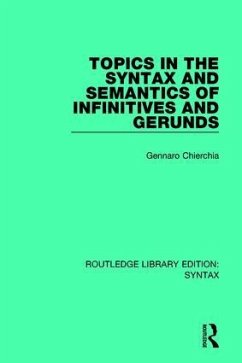
The Grammar of Japanese Mimetics
Perspectives from structure, acquisition, and translation
Herausgeber: Iwasaki, Noriko; Akita, Kimi; Sells, Peter

PAYBACK Punkte
28 °P sammeln!
Mimetic words, also known as 'sound-symbolic words', 'ideophones' or more popularly as 'onomatopoeia', constitute an important subset of the Japanese lexicon; we find them as well in the lexicons of other Asian languages and sub-Saharan African languages. Mimetics play a central role in Japanese grammar and feature in children's early utterances. However, this class of words is not considered as important in English and other European languages. This book aims to bridge the gap between the extensive research on Japanese mimetics and its availability to an international audience, and also to pr...
Mimetic words, also known as 'sound-symbolic words', 'ideophones' or more popularly as 'onomatopoeia', constitute an important subset of the Japanese lexicon; we find them as well in the lexicons of other Asian languages and sub-Saharan African languages. Mimetics play a central role in Japanese grammar and feature in children's early utterances. However, this class of words is not considered as important in English and other European languages. This book aims to bridge the gap between the extensive research on Japanese mimetics and its availability to an international audience, and also to provide a better understanding of grammatical and structural aspects of sound-symbolic words from a Japanese perspective. Through the accounts of mimetics from the perspectives of morpho-syntax, semantics, language development and translation of mimetic words, linguists and students alike would find this book particularly valuable.














